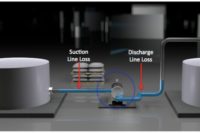Reducing Contamination Risks of Compressed Air in Food Plants: Benchmarking Good Manufacturing Practices

Any modern food manufacturing facility employs the use of compressed air extensively in the plant. As common as this is, the potential hazards associated with this powerful utility are not obvious and apparent. Food hygiene legislation to protect the consumer places the duty of care on the food manufacturer. For this reason, many companies often devise their own internal air quality standards based upon what they think or have been told is ‘best practice’. This is no wonder, as the published collections of Good Manufacturing Practices (GMP) that relate to compressed air are nebulous and difficult to wade through. Understandably this has led to a significant difference in the quality of compressed air used throughout the industry, with major differences even existing in plants owned by the same company. The goal of this paper is to help make sense of it all.
To download the white paper "Reducing Contamination Risks of Compressed Air in Food Plants:Benchmarking Good Manufacturing Practices," click here.
Looking for a reprint of this article?
From high-res PDFs to custom plaques, order your copy today!





